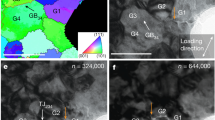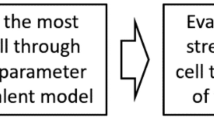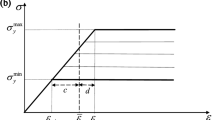Abstract
IN recent years there has been a growing awareness that the techniques of linear elastic fracture mechanics provide a powerful method for quantifying the behaviour of engineering components containing crack-like defects. In the fast fracture of high strength, low toughness materials1 and in fatigue crack growth2, it is now established that data from laboratory tests can be confidently applied to predict the integrity of a structure or crack extension in service using sharp crack stress intensity factors. More recently, a study of fatigue crack initiation from sharp notches in mild steel3 has shown that the number of cycles to initiate a crack can also be calculated using stress intensity factors. In components which operate at elevated temperatures there is a need to develop methods which describe the growth of crack-like defects in creed conditions. This is particularly relevant to welded joints where defects can be evident after stress relief and assessments are required of fitness for use.
This is a preview of subscription content, access via your institution
Access options
Subscribe to this journal
Receive 51 print issues and online access
$199.00 per year
only $3.90 per issue
Buy this article
- Purchase on Springer Link
- Instant access to full article PDF
Prices may be subject to local taxes which are calculated during checkout
Similar content being viewed by others
References
Special Technical Publication No. 381 (American Society for Testing and Materials, 1965).
Paris, P. C., and Erdogan, F., Paper 62-WA-234 (American Society of Mechanical Engineers, 1962).
Jack, A. R., and Price, A. T., Intern. J. Fracture Mech. (in the press).
Zener, C., Elasticity and Anelasticity of Metals (Chicago Univ. Press, 1948).
Hull, D., and Rimmer, D. E., Phil. Mag., 4, 673 (1959).
Cottrell, A. H., Special Report No. 70 (Iron and Steel Institute, Institute of Metals, 1961).
Greenwood, G. W., Phil. Mag., 8, 707 (1963).
Williams, J. A., Phil Mag., 20, 635 (1969).
Lindborg, U., Acta Met., 17, 157 (1969).
Gilbey, D. M., and Pearson, S., Technical Report 66402 of the Royal Aircraft Establishment (HMSO, 1966).
Goldhoff, R. M., and Beattie, H. J., Trans. Met. Soc. Amer. Inst. Min. Met. Eng., 233, 1743 (1965).
Myer, J., Willoughby, G., and Ham, R. K., Met. Sci. J., 2, 209 (1968).
Author information
Authors and Affiliations
Rights and permissions
About this article
Cite this article
SIVERNS, M., PRICE, A. Crack Growth under Creep Conditions. Nature 228, 760–761 (1970). https://doi.org/10.1038/228760a0
Received:
Issue Date:
DOI: https://doi.org/10.1038/228760a0
This article is cited by
-
Creep crack growth in the absence of grain boundary precipitates in UDIMET 520
Metallurgical and Materials Transactions A (2001)
-
Creep crack growth in the absence of grain boundary precipitates in UDIMET 520
Metallurgical and Materials Transactions A (2001)
-
Crack growth in metals at elevated temperature
Journal of Applied Mechanics and Technical Physics (1990)
-
Creep crack propagation at elevated temperature in a heat-resistant steel
Journal of Materials Science (1988)
-
Flaw tolerance of elevated temperature components designed to ASME code case 1592 Part I—Sustained loading
Journal of Materials for Energy Systems (1979)
Comments
By submitting a comment you agree to abide by our Terms and Community Guidelines. If you find something abusive or that does not comply with our terms or guidelines please flag it as inappropriate.



